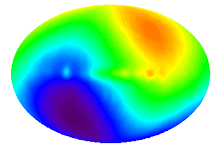The
human microbiome: exploring and manipulating our microbial selves
The
human body is home to roughly ten times more microbial cells than human cells,
containing a vast array of genes and metabolic activities referred to in
aggregate as the human microbiome. Metagenomics has recently enabled an initial
map of the microbial diversity found in different body habitats, individuals,
and populations. These developments include an extensive catalog of genes and
genomes, characterization of the human gut viriome, a description of the
patterns of succession of the gut microbiota during development, and links
between obesity and the gut microbiome. The application of principles from
macro-ecology, in addition to studies of defined communities in model
organisms, have begun to reveal the basic operating principles that govern
community assembly, stability, and function. These studies are beginning to
move beyond simple characterizations of the organisms and genes found in a
given habitat at a single timepoint, to a systems biology approach that allows
the characterization of this complex microbial community at a variety of
spatial and temporal scales. In the foreseeable future, studies of the human
microbiome promise to reveal new biomarkers for disease, novel strategies for
manipulation, and a more comprehensive view of human physiology.
The human
microbiome plays a key role in a wide range of host-related processes and has a
profound effect on human health.

沒有留言:
張貼留言